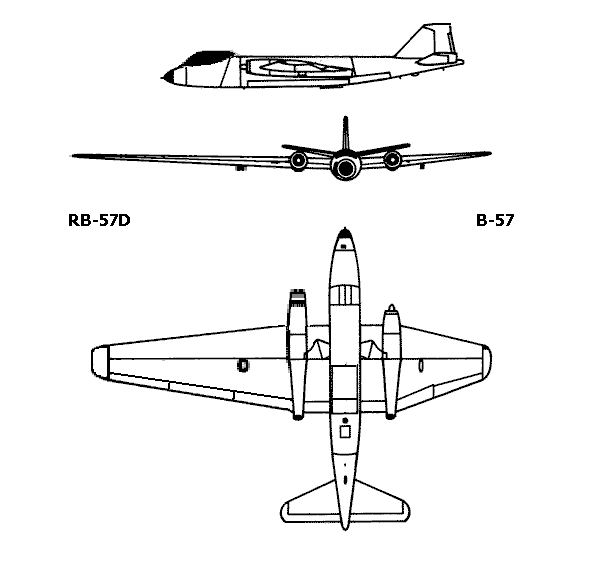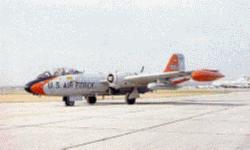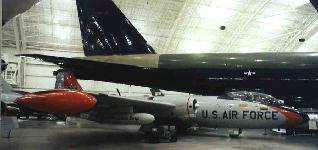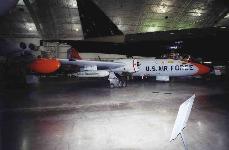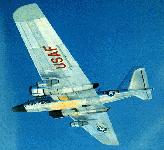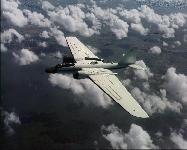




Specifications | ||
| Manufacturer | B-57 | RB-57D |
| Manufacturer | Glenn L. Martin Co. (English Electric) | |
| Type | bomber | Recconaissance |
| Engine | 2 J65 turbojets 7,220 lbs thrust each | 2 J57-P-37A turbojets, 11,000 lb thrust each |
| Span | 64 feet | 106 feet [126 feet RB-57F] |
| Length | 65 feet | 65 ft 6 in |
| Height | 15ft 6 in | 14 ft 10 in |
| Loaded Weight | 55,000 lb | |
| Max Speed | 570 mph | 582 mph at 40,000 ft |
| Ceiling | 49,000 ft | 65,000 ft |
| Range | 3,000 miles | |
| Crew | 2 | 2 |
| Armament | Four 20 mm cannons or four .50 caliber machine guns, 5,000 pounds of bombs in bomb bay, and eight rockets on wing pylon. | none |
